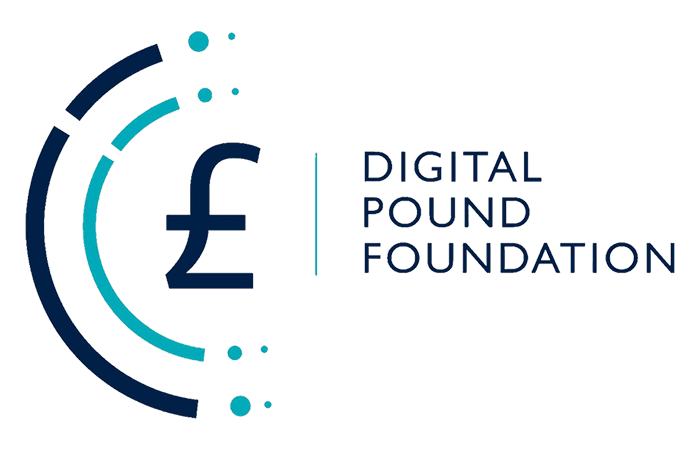This week, one of the Digital Pound Foundation’s key partners, Herbert Smith Freehills, released ESG: creating a purposeful future, the fifth edition of its Global Bank Review. The publication explores some of the key legal and commercial challenges facing the banks sector in relation to ESG, but also the opportunities that ESG presents to financial institutions to deliver a brighter, more conscious society.
As part of the Global Bank Review, Central bank digital currencies – walking the ESG tightrope looks at how CBDCs are seen as being a potential solution to help the unbanked into the financial system but that vast social promise must be balanced against complex environmental and governance concerns.
Introduction
Financial inclusion is an important step in reducing poverty and income equality. Yet over 1.7 billion ‘unbanked’ adults have no access to an account and millions more ‘underbanked’ lack access to mainstream financial services, according to the World Bank Group.
The problem is hardly confined to developing nations. Around 22% of adults in America are unbanked or underbanked, says the Federal Reserve. Traditional fiat currency systems provide access to financial services, but they are not suitable for – or easily accessed by – everyone.
Attention has now turned to the role technology may play in meeting this challenge. With nearly 5.3 billion unique mobile phone subscribers globally, digital currencies offered by central banks – known as retail central bank digital currencies (CBDCs) – could provide a solution. But for all the social benefit they promise, CBDCs give rise to ESG issues of their own.
The trouble with fiat currencies
Financial access sits at the heart of everyday life for many people. Bank and other transaction accounts allow us to store, send and receive cash. They are a gateway to financial products like savings, credit, loans and insurance that help us manage unexpected events and plan for the future.
Yet account ownership is not a reality for almost a third of adults globally. In emerging or volatile markets, financial institutions may not be accessible or robust. In developed nations, barriers like formal identification and credit history can preclude opening an account.
Financial exclusion creates a host of problems for such unbanked and underbanked individuals. It is closely linked to poverty and broader social exclusion and leaves them unemployable, vulnerable to theft and exposed to additional costs. Such costs are significant – in the UK, low-income households pay an annual ‘poverty premium’ of £478 on essential goods and services according to University of Bristol research.
Digital currencies to the rescue?
With the G20 committed to advancing financial inclusion worldwide, finding a credible solution to the accessibility and remittance problems of traditional fiat currency systems is high on the agenda for many central banks.
As global internet coverage and mobile phone usage continue to grow, attention has turned to technology for answers. CBDCs – a digital form of a nation’s fiat currency issued directly by its central bank, as opposed to existing digital currencies like Diem or Bitcoin that are backed by corporations or not backed at all – have taken centre stage. A recent Bank for International Settlements survey found that 86% of central banks are actively researching their potential, 60% are experimenting with them and 14% are already deploying pilot projects (the first of which was the Bahamian ‘sand dollar’ in October 2020).
According to institutions like the Asian Development Bank, well-designed CBDCs likely offer the best solution to financial inclusion problems. They do not require a bank account like most fiat currency systems, instead using innovative digital wallets. This could give the unbanked means to store cash and exchange payments, while providing the underbanked with a way to build their financial identity and create the credit history needed to access mainstream financial services.
The hurdles
Environmental issues
Despite their potential benefit, successfully implementing CBDCs requires central banks to fully grasp the complex technologies required. One key consideration is whether to use distributed ledger technology (DLT) as the infrastructure of any CBDC platform. Although not strictly necessary, it forms part of at least ten retail CBDCs in development, according to the US think-tank Atlantic Counsel.
Aside from adding technical complexity to the solution, some DLT infrastructure gives rise to significant environmental concerns that must be recognised in the design of CBDC platforms. Systems that use the ‘proof of work’ consensus mechanism will not be suitable for large-scale CBDCs in major economies as these typically require vast computer power to process transactions. Cryptocurrency platform Bitcoin relies on this mechanism and consumes 97TWh/year (and growing), using more energy to process one transaction than 770,000 VISA transactions.
Social issues
Central banks also need to tackle broader challenges surrounding the framework in which CBDCs will operate.
Adoption and use of any digital currency depends on trust and demand from end-users, but only 54% of people would trust a digital currency issued by their government or a central bank, according to a survey by The Economist and FinTech firm Crypto.com. This is exacerbated by surveillance concerns, which would require central banks to establish appropriate governance to control sharing of transactional data with third parties – balancing user privacy with the need to address illegal activity.
Governance issues
Then there are the know-your-client (KYC) and anti-money laundering (AML) processes used to verify customer identity. In the case of CBDCs, these could give rise to a vast central database of personal and financial information. Without proper governance through data privacy laws and effective cross-jurisdictional enforcement, this may intrude on privacy and result in human rights concerns. This data will likely also be a high-value target for malicious threat actors like criminal gangs. The centralised nature of any database may elevate the risk of fraud, theft and extortion attempts. The broader infrastructure on which the CBDCs run, meanwhile, would be a target for organised criminals seeking to extort money – for example, through ransomware attacks – and hostile nation states.
Any attack that takes a CBDC platform offline will have serious implications for customers, who will be unable to access and use their money. Central banks will no doubt factor this into their technical architecture, but CBDC ecosystems are complex and require multiple parties to access data – from downstream banks and financial institutions to intermediary payment service providers. This complicates security arrangements and increases the risk of attackers finding a weak spot.
What’s next?
The social impact of CBDCs on marginalised communities will no doubt continue to drive the growing momentum for countries to implement them. Approaches will vary, but it remains important for those designing and engaging with CBDCs to note the potential environmental and governance challenges that any technological solution may bring, particularly thorny privacy issues.
Lee A. Schneider, Originating Member of Digital Pound Foundation agrees “Central bank digital currencies may provide a lift on the social element of ESG, but without accounting fully for environmental and governance matters, nations will fall short of their ESG goals.”.
Commercial banks and other payment service providers are set to play a key role in how CBDCs are accessed and used by individuals and business. They may also be instrumental in finding commercial solutions to such ESG challenges, making use of their insight into private digital banking products to help CBDC initiatives achieve the potential of their social benefits.
Want to learn more?
To find out how Herbert Smith Freehills can help your business navigate the challenges and realise opportunities in the digital space, then please get in touch with Alex Cravero (Digital Law Lead – UK/US and EMEA): alex.cravero@hsf.com
























































